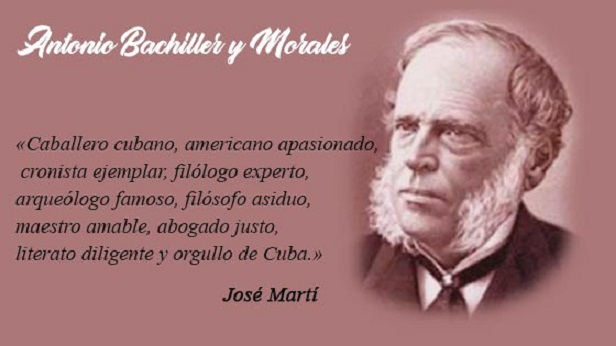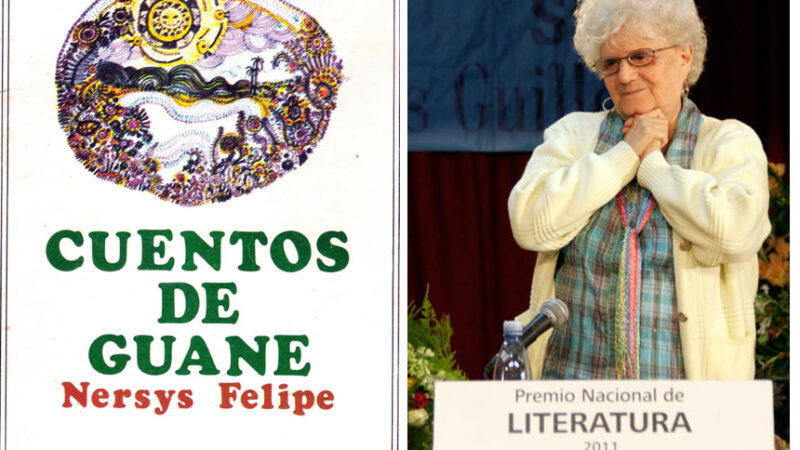Lesbia Vent Dumois: I think I am a woman of institutions
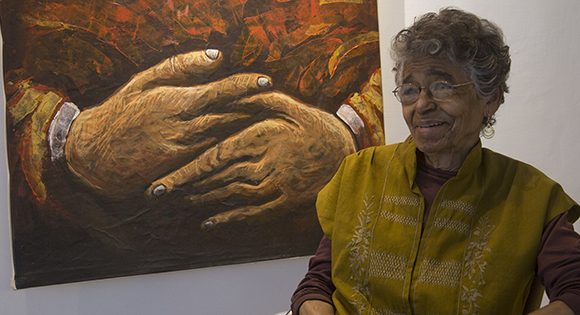
Lesbia Vent Dumois is an artist, an educator and a great woman for those who share her work in the Union of Writers and Artists of Cuba (Uneac). She is 91 years old. She was born in Cruces, in the former region of Las Villas, to a mother who was a dressmaker and a father who was a cabinetmaker, trades in which good taste and a sense of detail are fundamental.
She confesses that this environment encouraged and nurtured her vocation for the plastic arts. It is a creative universe that she still loves today.
«My mother always taught us practical and decorative sewing. In the case of my father, I saw him carve. He was a person who was very passionate about his craft, and as the carpentry workshops were in the same house at the time, I saw both of them working.»
Did you want to be an architect, but teaching came first?
There was no possibility of being an architecture student in Santa Clara. I studied high school. What opened up at the University of Las Villas was education. At that time I had a degree in teaching and what I did was to perfect and improve my teaching skills.
My links with the plastic arts began during my studies at the teacher training college in the afternoons and evenings.
What have you learned from teaching? How have you applied this to your work?
I like teaching. In the end, I discovered that you never forget the pedagogy. I started by teaching drawing in secondary schools, «and it’s always been good, because those pupils have other interests.»
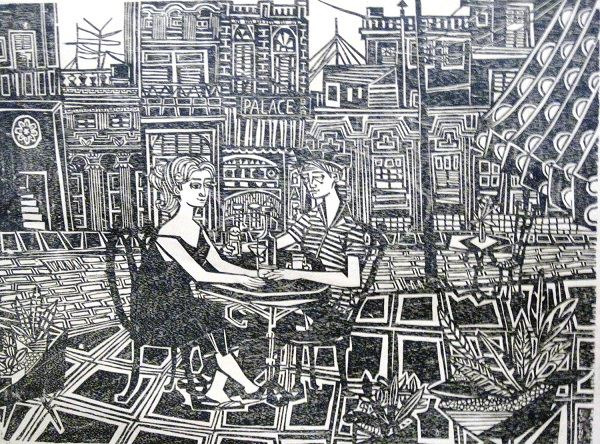
Let’s talk about Carmelo González, who was first your teacher and then your partner in life. Did he put you in touch with a certain profession, a certain technique, a certain grammar?
He never hid any of the knowledge he had, at least not from his students. He was a teacher who was happy to share his knowledge with others. He was full of enthusiasm. It was Carmelo who would take us to the streets to paint and who would give us elements that were useful for research and not for memorisation. Sometimes they were of a theoretical nature, to direct us to libraries, and sometimes he took us catalogues of what was happening in Havana: the exhibitions that were held, the artists who came, what was happening in the Lyceum, in the small private galleries, what was being brought to the Museo Nacional de Bellas Artes, among other contents and initiatives.
Later on in our professional lives, this training was very helpful.
His life is not only his work. It is also the time he has dedicated to the Casa de las Américas, to directing its plastic arts department, to working hand in hand with Haydée Santamaría and Mariano Rodríguez. As a person and an artist, what did this experience leave you with?
A great privilege. I always say: The greatest privilege is to have lived in the era of Fidel Castro (1926-2016). I started working at the Casa de las Américas almost in 1959 and in 1963. Mariano Rodríguez, who had been in charge of the Plastic Arts and the section of the same manifestation at Uneac since its creation, had asked me to help organise the engravings for the 1st Plastic Arts Competition, which was held at the Casa de las Américas in 1961. And I said yes.
I had come from working at the National School of Art, because I’d been privileged to found many things, and I went to teach in the morning and I concentrated on the Casa de las Américas in the afternoon.
I never had any contact with Haydée Santamaría that first or second year. In my family, the connection was always with Melba Hernández. She was from Cruces and they knew each other. But my mother was sewing for one of Haydée’s cousins, and my first conversation with her was not to talk about the institution. She asked me if I was Andrea’s daughter who was sewing for Yolanda, her cousin. That was very spontaneous of Haydée.
I worked there for 40 years. On 1 May 1965, I officially started working at the Casa, and then I worked in Uneac as secretary of the association, member of the first executive committee after the congress, where I stayed until 1969, and always linked to the organisation.
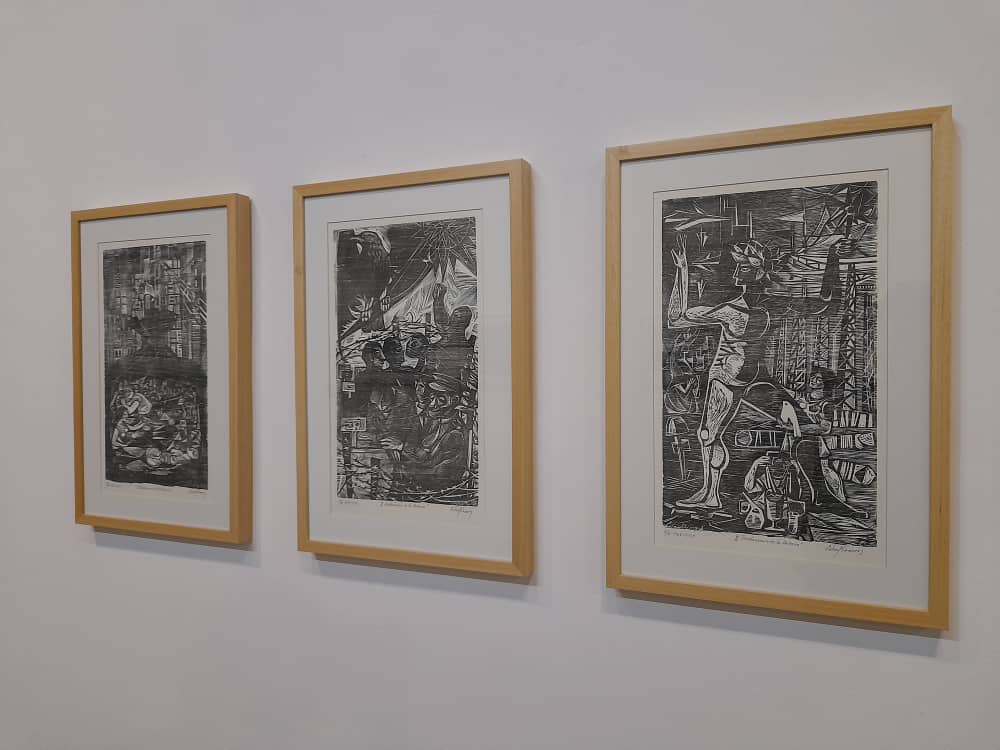
In 2006, José Villa Soberón, the president of Artes Plásticas at the time, asked me to direct the Villa Manuela Gallery, since I had already retired from the Casa de las Américas in 2003.
I didn’t want to, because I wanted to devote myself to my artistic life. But I have always been associated with state institutions. I think I am a woman of institutions. Ever since I thought I knew something, I have always been linked to them. For two years I was the director of the gallery that is the treasure of Uneac. Then, in 2008, I was elected President of the Plastic Arts Association at the Congress, a position I have held in successive terms.
When people talk about Lesbia’s work, there is always a nostalgia for the past. But her work is also present, especially through Uneac. What are the motivations behind the work that you do in this organisation?
Like other artists, I strongly believe in my social responsibility. People say I can direct, I think I can direct (laughs) and I have been directing for many years. So I’m on the right track if I can contribute something from the association, to create a close link between the different sections, between the different ways of doing things.
It is also my responsibility to enrich the institution with my ideas, to think about how I am going to change it and how I am going to make it better. «I believe that this is an act of creation. It is as creative as the work I do in my workshop.
I know that it takes time away from my artistic work. But it also enriches me to the extent that I get to know and work with artists from Cuba, Latin America and other countries. It’s an act and an education. It has given me a different interpretation of art, and that nourishes your work, even if you think it doesn’t.
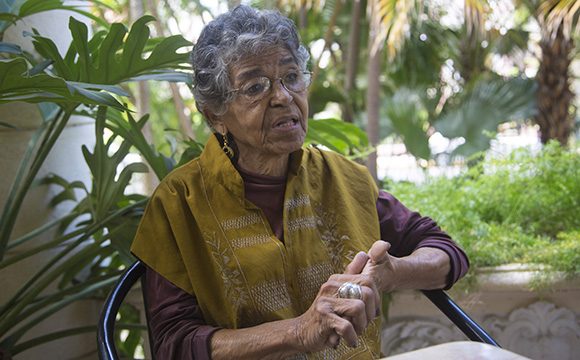
Uneac is on its way to its 10th Congress. Since its creation, its commitment to the destiny of national culture has been evident. What should it strengthen or improve in its functioning, from the spaces of dialogue and discussion of its members, in order to continue to be an enrichment and support for the cultural policy of the country?
I think it should be very aware of what is happening in society. The idea is not to take from the past what can be taken from the past, but to think about how we can have a rejuvenation of this institution. To think about how new creators think, how we attract them, what work is expected of us, because it has not been an institution that has remained peaceful, but one that has experienced the same vicissitudes that society has experienced. Because Uneac is an important organisation for all times and has the responsibility of representing the Cuban Revolution.
Translated by Luis E. Amador Dominguez


